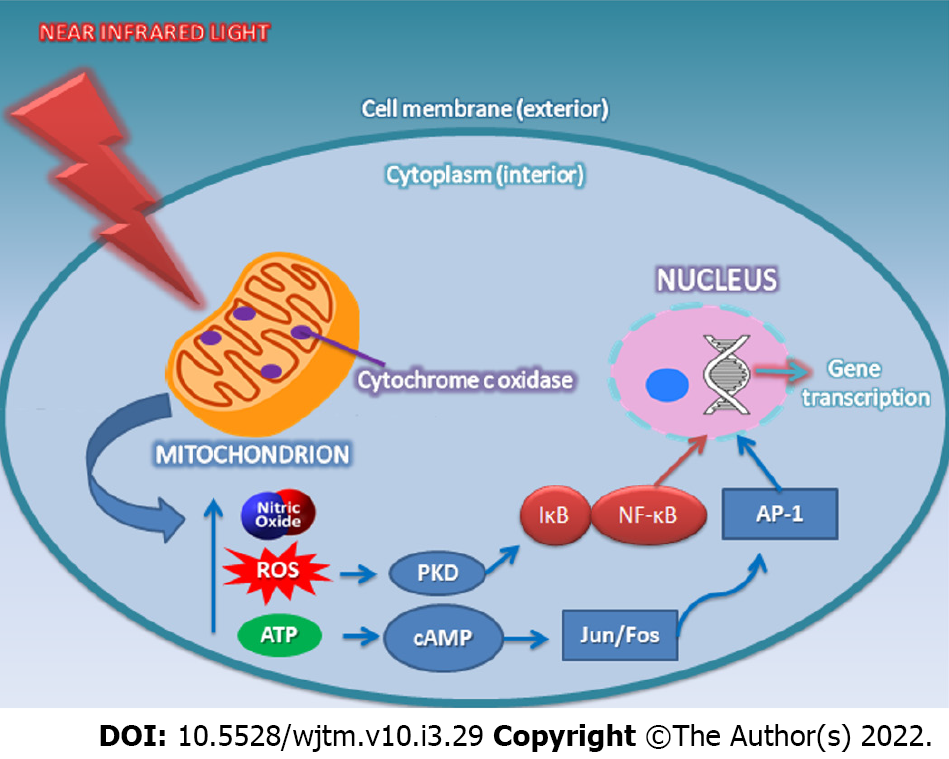Photobiomodulation Can Be Fun For Everyone
Table of ContentsGetting The Photobiomodulation To WorkThe Ultimate Guide To PhotobiomodulationPhotobiomodulation Can Be Fun For AnyoneHow Photobiomodulation can Save You Time, Stress, and Money.
Laser treatment is a clinical therapy that makes use of concentrated light to stimulate a procedure called. During PBM, photons get in the cells and engage with the cytochrome c complex within mitochondria. This communication sets off an organic waterfall of events that leads to a boost in mobile metabolic rate, which can in addition to speed up the healing process.There is agreement that the application of a restorative dosage of light to damaged or useless tissue causes a mobile action moderated by mitochondrial devices. Photobiomodulation. Research studies have actually revealed that these changes can affect discomfort and swelling, along with, cells repair service
Adjustments in ATP, reactive oxygen varieties and nitric oxide follow light absorption by Cc, O. These impacts are redox state and dosage reliant.

The smart Trick of Photobiomodulation That Nobody is Discussing
PBM gadgets have been gotten rid of for advertising and marketing by FDA via the Premarket Notification/510( k) process as adjunctive tools for the short-term relief of discomfort. These clearances were based on the discussion of professional data to sustain such insurance claims (Photobiomodulation). In this treatment, a light is placed near or in call with the skin, enabling the light power (photons) to penetrate tissue where it engages with chromophores situated in cells leading to photophysical and photochemical adjustments that lead to modifications at the molecular, cellular and tissue levels of the body
Remarkably, recent study suggests that light can boost efficiency in regular tissues and cells. The prospective applications of PBMT are countless and are being explored experimentally at the basic science, pre-clinical and professional level. The current scientific uses are for the alleviation of pain and swelling and the treatment of sports injuries.

The treatment specifications and variety of sessions required for PBMT are reliant upon area and reason. PBMT usually requires greater than one treatment for optimal pain alleviation. It might take several treatments for here the results anonymous to become evident. reports that it can take anywhere from eight to 30 sessions for a treatment to be totally reliable, and some patients locate it essential to undertake therapy 2 to four times per week.
How Photobiomodulation can Save You Time, Stress, and Money.
Therapy specifications for PBMT were initially established utilizing cells in vitro and in little pet models. These therapy criteria typically had a reduced irradiance and fluence and functioned well for cutaneous applications. When medical professionals began to utilize PBMT to deal with structures that were situated deeper in the body, they utilized these criteria with unfavorable outcomes.
We now recognize that these unfavorable studies was because of incorrect gadget and therapy parameters for transcutaneous treatment of much deeper frameworks. Current advancements in laser therapy gadgets and even more study right into the appropriate dosages have substantially boosted the results of PBMT. For treating deep tissues, the wavelength of light utilized determines the depth of penetration into a tissue.
It is important that a medical professional uses the appropriate wavelength of light and criteria to deal with a problem. One wavelength and one collection of treatment criteria will certainly not be reliable for all conditions. Adverse side results have actually not been reported great post to read from the usage of PBMT.
The Only Guide to Photobiomodulation
In the initial experiment, Dr. Endre Mester, utilized cut rats and observing exactly how the laser influenced their ability to expand hair contrasted to the team that was not receiving LLLT. He located that the group of computer mice getting LLLT were able to grow their hair back more swiftly than the team of computer mice that didn't get LLLT (Hoon C, et al; 2012).
This therapy is labelled this method to set apart the difference between the lasers some occupations utilize to reduce (eg. in surgical treatments, or oral procedures). Low-level light treatment is pain-free, non-invasive therapy. It is used to reduce swelling, swelling, and persistent joint disorders, lower pain and accelerate wound recovery of nerves and tissues (Hoon C, et al; 2012).
LLLT has a biphasic response, implying that lower doses are generally seen to be more helpful than greater dosages. That being said, dosages greater or less than the optimal dose doesn't influence (Hoon C, et al; 2012). Consequently, it can be challenging to have research studies on LLLT with many criteria.
Some firms incorporated the two (LED and laser) to give an extra well-shaped therapy because lasers can permeate deeper than LED and infrared light (Norman Doidge, The Brain's Means of Healing, 2015). During therapy, the area that is being treated is subjected to LED light from a Bio, Flex Laser, which is at 660 nm wavelength, complied with by infrared light at 830-840 nm wavelength.